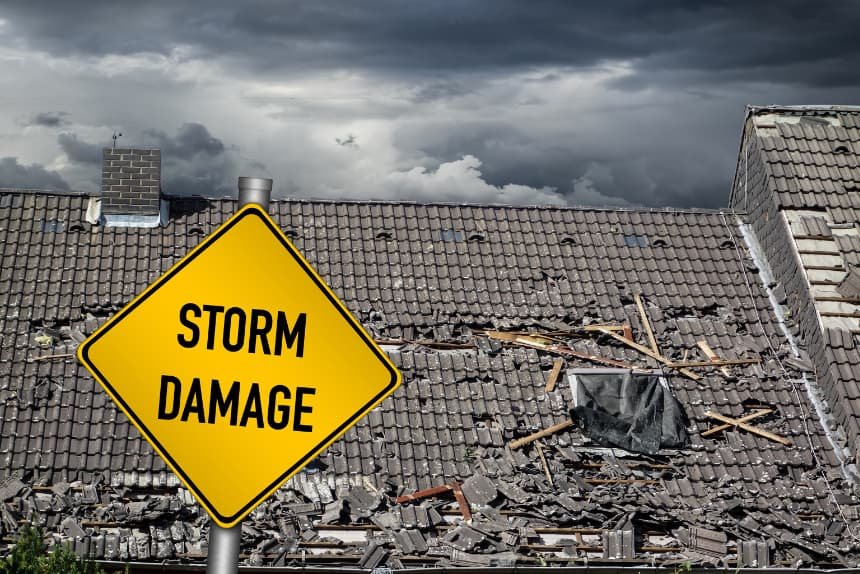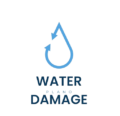Storms can leave a trail of destruction in their wake, making it essential to know what steps to take after the damage has occurred. Your safety is the priority; once the threat has passed, assessing the condition of your property is crucial. Be vigilant for potential hazards such as downed power lines or structural damage to your home. It’s important to document the aftermath, as this information will be vital when contacting your insurance company.

Navigating the aftermath of storm damage also involves knowing whom to contact for assistance. Local authorities can offer immediate aid, and communicating with your insurance provider is imperative to begin the claim process. The process of repair should start promptly, but only after ensuring it’s safe to do so. Lastly, reflecting on the experience will equip you with better preparedness for any future storms.
Key Takeaways
- Prioritize safety and assess damage after the storm passes.
- Contact local authorities and your insurance company promptly.
- Start repairs safely and learn from the experience for future preparedness.
Table of Contents
Immediate Steps After Storm Damage
When a severe storm subsides, addressing storm damage quickly and safely is crucial. Wisely prioritizing actions can mitigate further property damage and ensure personal safety.
Safety First
After the storm has passed, your immediate concern should be safety. Beware of potential hazards such as downed power lines, which should never be touched or approached; they could be live and present grave danger. Be cautious of standing water, broken glass, and other debris that could pose risks. If you smell gas or suspect a leak, turn off the main gas line and evacuate the area immediately.
Assessing the Damage
Once you’ve established a safe environment, proceed to assess the storm damage. Look for visible structural damage, including issues with your home’s foundation or frame. Inspect your property for roof damage, broken windows, and fallen trees that might have compromised the integrity of your home. Document all property damage by taking photos before cleaning up, as these can be crucial for insurance claims. If you encounter water damage, consider that mold can develop quickly, so prompt attention is necessary.
Remember that a professional should address significant damage, especially when it involves power lines or structural safety.
Contacting Your Insurance Company

After sustaining storm damage, it’s crucial to act promptly and contact your insurance company to report the damage. Your immediate focus should be on filing an insurance claim and gathering all necessary documentation and evidence to support your claim.
Filing an Insurance Claim
Step 1: Contact Your Insurance Provider Immediately
- Prompt Reporting: Notify your insurer as soon as possible to start the claims process. Companies like Consumer Reports stress the importance of quick action.
- Policy Review: Review your policy details regarding coverage for storm-related incidents, such as roof damage, water damage, or significant destruction.
Step 2: Know Your Coverage
- Homeowners Insurance: Typically covers hail and wind damage.
- Flood Insurance: Requires a separate policy, commonly through the National Flood Insurance Program, to cover water damage.
- Hurricane Damage: May need specific policy endorsements or deductibles.
Documentation and Evidence
Gather Comprehensive Evidence
- Photos and Videos: Take detailed photographs and video footage of all property damage.
- Inventory of Losses: Make an itemized list of damaged possessions.
Maintain Records
- Keep Receipts: Preserve all receipts related to temporary repairs or living expenses if applicable.
- Written Statements: Obtain written estimates from contractors for storm damage repair.
Documentation Tips
- Be Thorough: The more evidence you provide, the better your insurance company can assess the damage.
- Secure Storage: Keep copies of all communications and documents in a secure place.
Contacting your insurance company after storm damage is essential. By understanding the claims process and requirements for your specific coverage, as well as meticulously documenting the damage, you enhance the likelihood of a favorable outcome in your insurance claim.
Storm Damage Repair Process

After a storm hits, addressing the damage quickly is vital to prevent further harm to your property. Here’s an overview of the steps you should take towards storm damage repair.
Temporary Repairs and Mitigation
Immediately following a storm, temporary repairs to prevent additional damage are your first course of action. If your roof has suffered damage, such as missing shingles or holes left by hail, cover these areas with tarps to prevent water ingress. Ensure these repairs are safe and do not attempt to climb on a damaged roof; it’s safer and more effective to call a professional contractor our team of water damage restoration plano is here to help. For water damage, promptly remove any standing water and keep the affected area well-ventilated to mitigate mold growth.
Professional Restoration Services
Once immediate threats are managed, enlist professional restoration services. Specialists in storm damage restoration will conduct a thorough assessment and enact a plan tailored to your circumstances. This can include structural damage repairs, water damage restoration, or even fire damage restoration if there are electrical issues. A professional approach ensures that all aspects of restoration happen efficiently and up to standard. For a reliable contractor, due diligence is recommended such as checking via Better Business Bureau. Remember that restoration is a multi-step process that will not only repair but also help prevent future damage.
Preparation for Future Storms
In the wake of storm damage, preparing for future natural disasters is critical to minimize your risks and fortify your home against the forces of nature. From strengthening your property’s structure to staying informed about upcoming severe weather events, these steps are your defense against the unpredictability of storms.
Improving Home Resistance
To enhance your home’s resilience to high winds, heavy rain, and hail damage, consider investing in impact-resistant windows and doors. It’s also essential to inspect your roof regularly for any signs of wear or damage, as a well-maintained roof is your first line of defense against hurricane damage. Install straps or additional clips to securely anchor your roof to the structure of your home.
- Exterior Checks:
- Clear your yard of any debris that could become flying projectiles.
- Trim trees and shrubs to prevent limb breakage.
- Flood Insurance: Research and purchase flood insurance well in advance since policies often take 30 days to go into effect. The Federal Emergency Management Agency (FEMA) provides useful guidance on protecting your property.
Understanding Weather Alerts
Staying informed is your best weapon against surprise during hurricane season. Subscribe to alert services from the National Weather Service or use a NOAA Weather Radio to receive real-time updates on severe weather. Understand the difference between a watch and a warning so you can act accordingly.
- Alert Systems: Sign up for local alerts and warnings on your smartphone or online to stay prepared.
- Evacuation Plan: Create and practice a family evacuation plan, including identifying safe rooms away from windows and glass doors.
Remember, a proactive approach to disaster prevention can significantly reduce the risks and potential damages from storms.
Frequently Asked Questions
After a storm, it’s important to take the right steps to ensure your safety and begin the recovery process. The FAQs below will guide you through what to do in the wake of storm damage.
How can I safely assess the damage to my property following a storm?
To ensure safety, wait until the severe weather threat has passed before exiting your shelter. Wear long pants, a long-sleeved shirt, and sturdy shoes to protect against debris. Be cautious of potential hazards such as downed power lines or structural damage to your property. Prioritize your safety and consider seeking professional help if the damage is extensive.
Which steps are essential for homeowners to take immediately after storm damage occurs?
Start by checking for immediate threats to your safety, such as downed power lines or gas leaks. If it’s safe, document the damage with photographs for insurance purposes. Cover broken windows and damaged roofs temporarily to prevent further damage. Be sure to report any downed lines to local authorities and contact your insurance company to start the claims process.
What are the best practices for documenting storm damage for insurance claims?
Take clear, detailed photos or videos of all the damage right after the storm, if it’s safe to do so. Include wide shots for context and close-ups for detail. Make a list of damaged or lost items and note their age and value if possible. Keep all receipts related to home repairs or temporary accommodations for your insurer.
Who should I contact for professional storm cleanup and repair services?
Reach out to a reputable storm damage restoration service that is licensed and insured. Ensure they have experience with storm damage recovery and check their references. Avoid individuals or companies that show up unsolicited offering services, as they could be scammers.
What is the process for recovery and restoration after significant storm damage to my home?
The recovery process begins with an assessment of safety risks, followed by stabilization to prevent further damage. This may include boarding up windows and tarping roofs.
